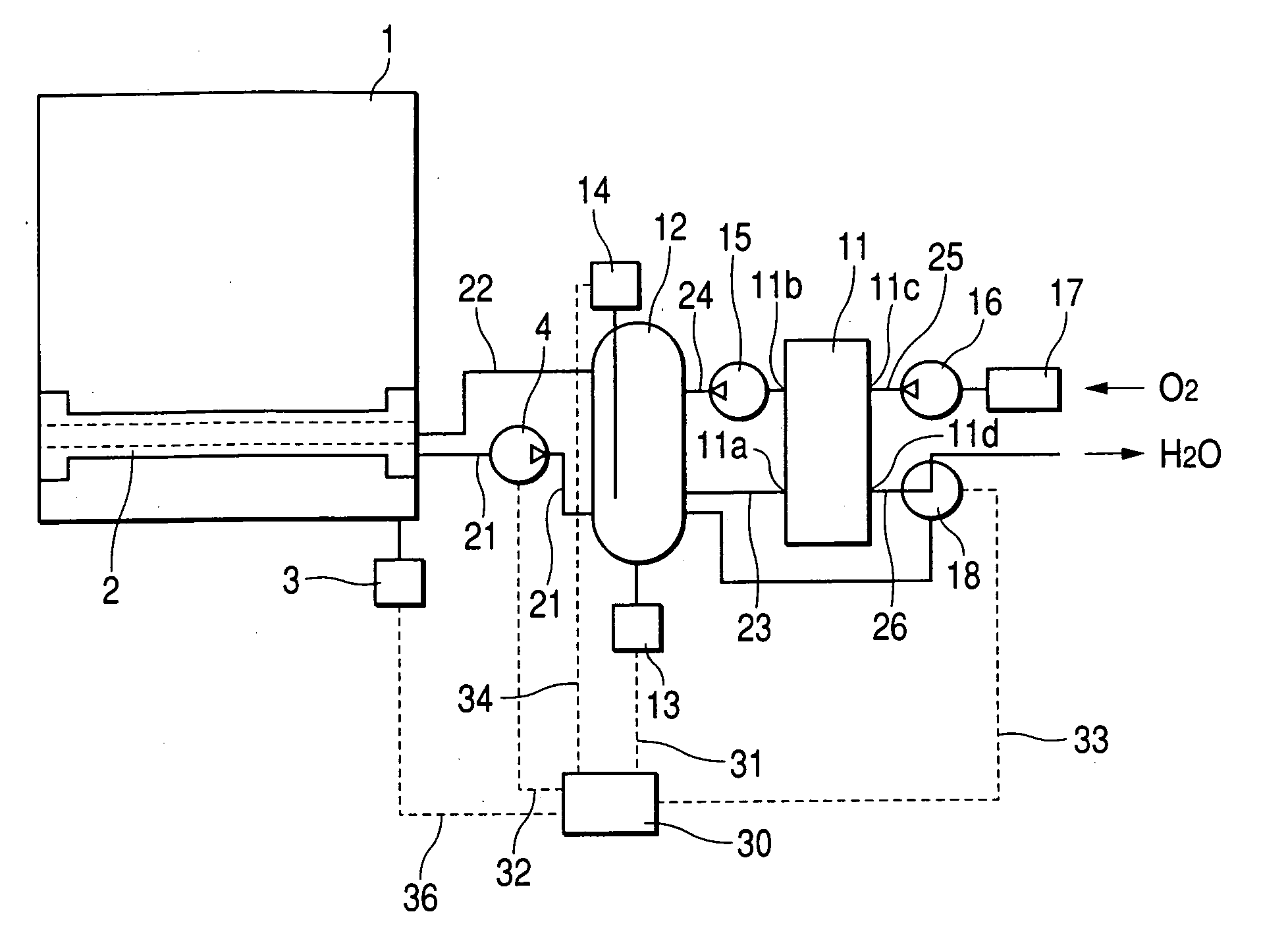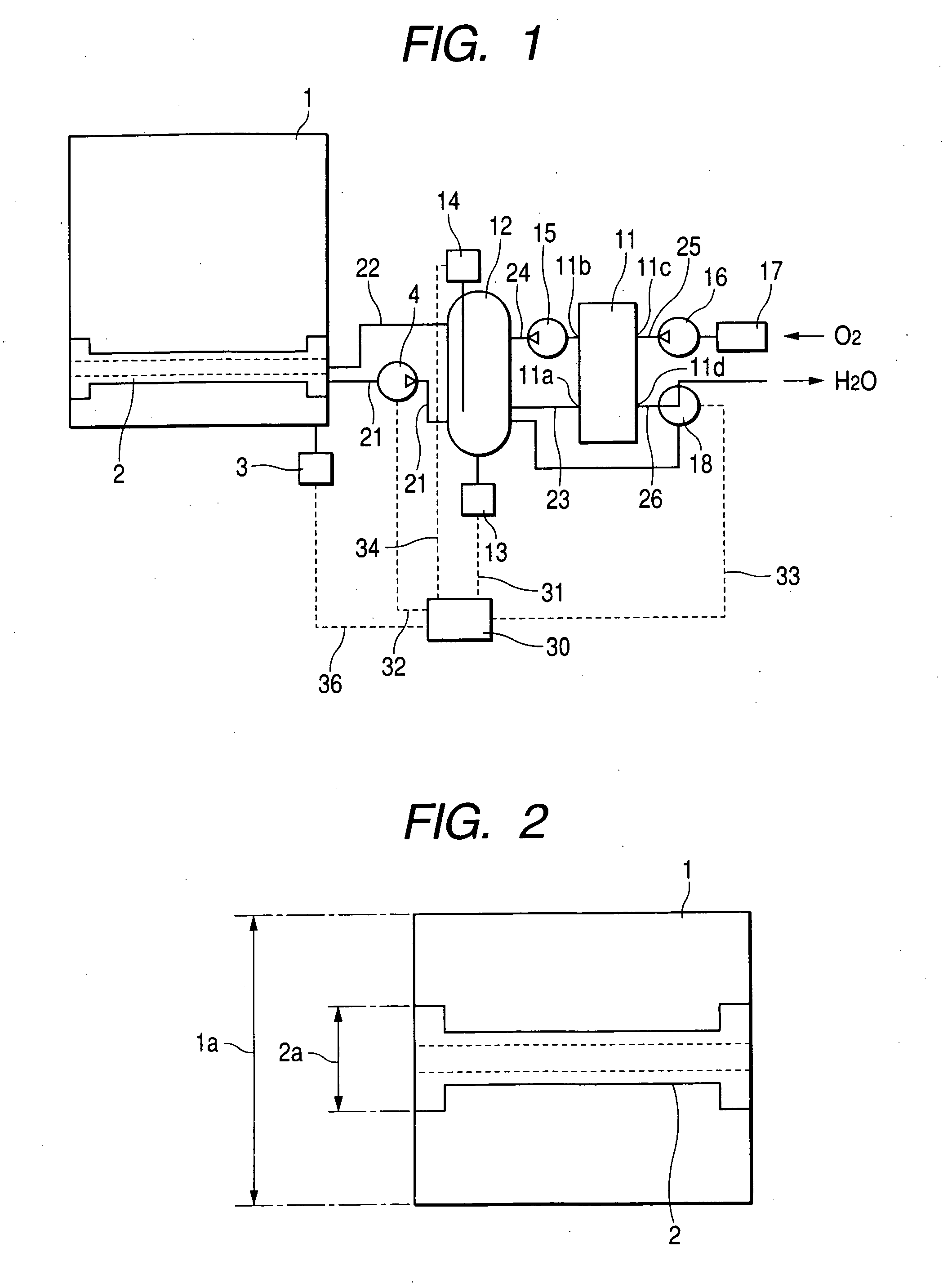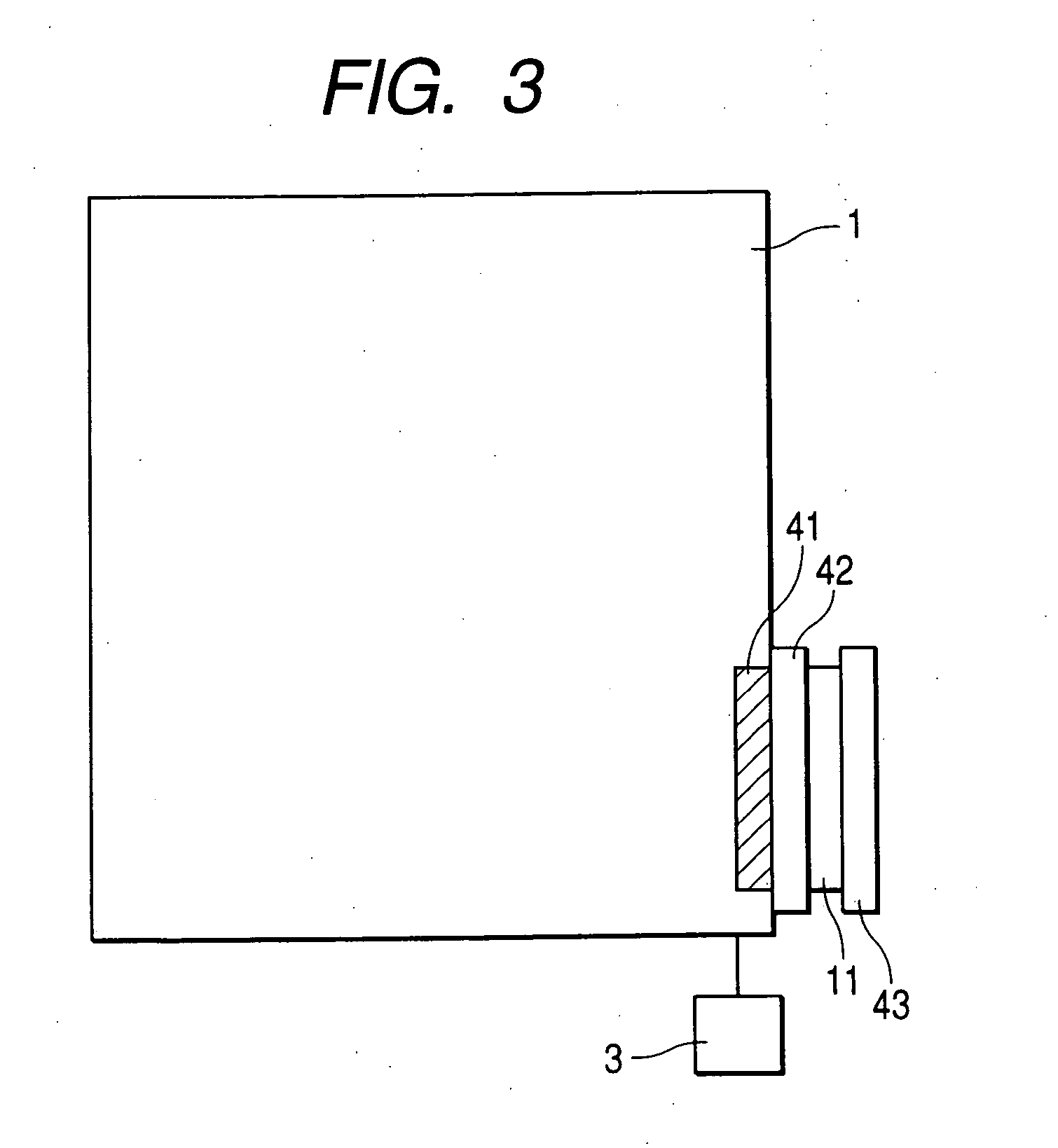Fuel cell system for an automotive vehicle
a fuel cell and automotive technology, applied in the field of fuel cell systems, can solve the problems of large electric power required for the automotive vehicle, the inability to install a heavy and expensive reformer on the vehicle, and the general dissatisfactory performance of the reformer, so as to achieve the effect of convenient installation in the automotive vehicl
- Summary
- Abstract
- Description
- Claims
- Application Information
AI Technical Summary
Benefits of technology
Problems solved by technology
Method used
Image
Examples
first embodiment
[0028]FIG. 1 shows the arrangement of a fuel cell system in accordance with a first embodiment of the present invention.
[0029] This fuel cell system is usable as an auxiliary power source for an automotive vehicle. For example, this fuel cell system is effectively used to prevent a battery from going flat in a long-lasting stopped condition of an automotive vehicle.
[0030] As shown in FIG. 1, this fuel cell system includes a windshield washer container 1, a permeable membrane unit 2, a first methanol concentration sensor 3, a first circulating pump 4, a controller 30, a fuel cell 11, a methanol tank 12, a second methanol concentration sensor 13, a liquid amount meter 14, and a switching valve 18.
[0031] The windshield washer container 1 stores windshield washer fluid used for cleaning a windshield glass of an automotive vehicle. The windshield washer container 1 is, for example, a normal windshield washer container which has been conventionally employed for the automotive vehicles ...
second embodiment
[0058]FIG. 3 shows the arrangement of a fuel cell system in accordance with a second embodiment of the present invention. The components and portions in FIG. 3 are denoted by the same reference numerals as those of FIG. 1 when they are identical with those of the fuel cell system according to the first embodiment.
[0059] According to the first embodiment, the fuel cell system includes the first circulating pump 4, the second circulating pump 15, and the air pump 16 to forcibly supply methanol and air to the fuel cell 11. The second embodiment is different from the first embodiment in that the first circulating pump 4, the second circulating pump 15, and the air pump 16 are omitted. In other words, the second embodiment provides a fuel cell system which is capable of introducing methanol and air into the fuel cell 11 based on natural diffusion.
[0060] As shown in FIG. 3, the fuel cell system of this embodiment includes a permeable membrane 41 provided on a side surface of the windshi...
third embodiment
[0068]FIG. 4 shows the arrangement of a fuel cell system in accordance with a third embodiment of the present invention. The components and portions in FIG. 4 are denoted by the same reference numerals as those of FIG. 3 when they are identical with those of the fuel cell system according to the second embodiment. The fuel cell system according to this embodiment is different from the fuel cell system according to the second embodiment in the arrangement of the windshield washer container1.
[0069] The windshield washer container 1 of this embodiment is a general type. However, as shown in FIG. 4, the windshield washer container 1 has a partition 51 to divide the inside space into two chambers, i.e. a methanol container 52 and a surfactant container 53.
[0070] The methanol container 52 stores methanol and water, while the surfactant container 53 stores surfactant. The methanol and the surfactant of this embodiment correspond to the windshield washer fluid of the present invention.
[0...
PUM
| Property | Measurement | Unit |
|---|---|---|
| electric power | aaaaa | aaaaa |
| permeable | aaaaa | aaaaa |
| width | aaaaa | aaaaa |
Abstract
Description
Claims
Application Information
 Login to View More
Login to View More - R&D
- Intellectual Property
- Life Sciences
- Materials
- Tech Scout
- Unparalleled Data Quality
- Higher Quality Content
- 60% Fewer Hallucinations
Browse by: Latest US Patents, China's latest patents, Technical Efficacy Thesaurus, Application Domain, Technology Topic, Popular Technical Reports.
© 2025 PatSnap. All rights reserved.Legal|Privacy policy|Modern Slavery Act Transparency Statement|Sitemap|About US| Contact US: help@patsnap.com



